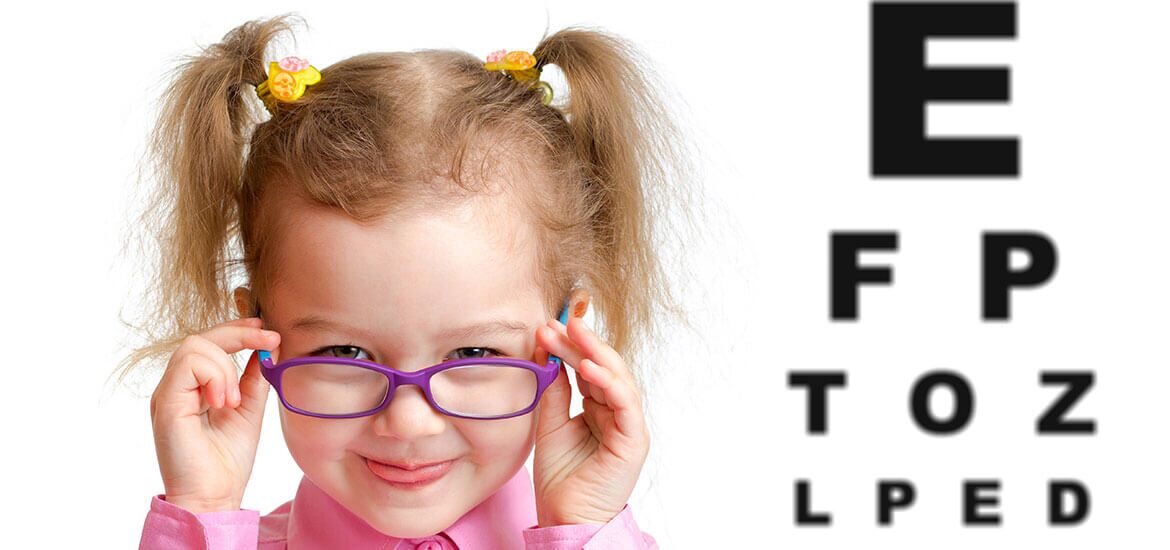
Children’s Eye Exams
When should your child’s first eye exam be scheduled? Maybe you are noticing that your child is having some problems with their vision, or you just want to make sure everything is in working order. Eye exams at an early age are crucial in the developmental stages of your child’s life. Statistics show about 7.5% of preschoolers and 25% of elementary aged children have some type of problem with their eyesight. If certain vision problems are left untreated at a young age, there is the potential for permanent vision loss.
When is the best time for Children to have their eyes examined?
Experts recommend for infants to have their first comprehensive eye exam when they are 6 months of age. The next eye exam should take place when the child is 3 years of age, and then again at the age of 5 or 6.
If no vision correction is necessary, the American Optometric Association recommends for children to have their eyes examined every two years. If your child does need corrective lenses, then they should have their eyes examined annually or as their eye doctor recommends.
How to Schedule Your Child’s Eye Exam
The first medical professional to likely examine your child’s eyes is generally your family doctor or pediatrician. Problems may be recognized in the initial examination, and the doctor may refer you to an optometrist or ophthalmologist that will be able to better diagnose any vision irregularities.
When choosing an eye appointment time for your child, schedule a time when your child is normally alert and cheerful. Eye exams will be conducted depending on the age of your child, but generally examinations involve: vision testing, case history, determining if corrective lenses are needed, testing eye alignment, eye health exam, and a consultation with the parent regarding the results.
Make sure to inform the eye doctor of any symptoms your child has experienced in the past. This could include eye rubbing, excessive blinking, delayed motor development, poor eye tracking skills, or if they have failed a vision screening at school or with your family pediatrician.
Common eye problems that impact children
Near Sightedness, Farsightedness, Astigmatism are the most common vision problems that affect children, but more serious issues may be recognized by your child’s eye doctor.
Amblyopia
Most people know this as “lazy eye”. This occurs when one or both eyes has decreased vision despite not having any eye problems. Amblyopia is commonly caused by strabismus and having a significant difference in the refractive errors between both eyes. The main treatment for this generally includes patching the stronger eye, which decreases weakness in the effected eye.
Strabismus
This occurs when there is a misalignment of the eyes. Stabismus is commonly caused by a defect in the muscles that are attached to the eye, which controls eye positioning and movement. If this is left untreated, amblyopia can occur in the effected eye. Depending on how severe the case is, surgery may be needed to correct Strabismus.
Convergence insufficiency
This is the inability for a child to keep their eye aligned for
reading and other tasks that involve focusing. Convergence insufficiency can be treated with vision therapy by using a specific set of eye exercises.
Focusing Problems
Also called accommodation problems, children with this may have trouble adjusting their focus from near to far or have difficulty focusing for reading. Vision therapy can help successfully treat focusing problems.

